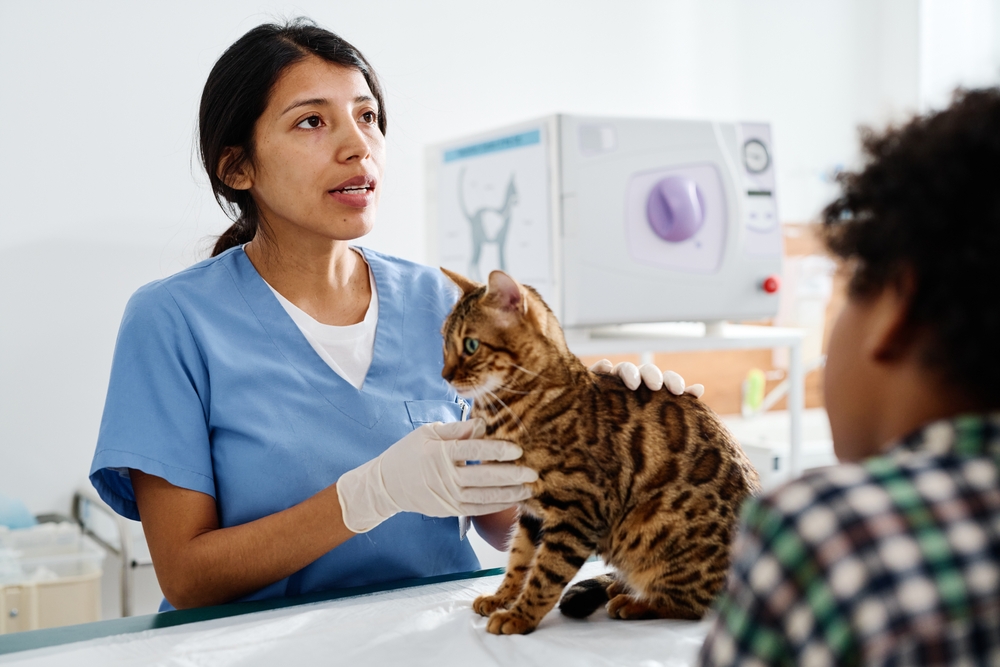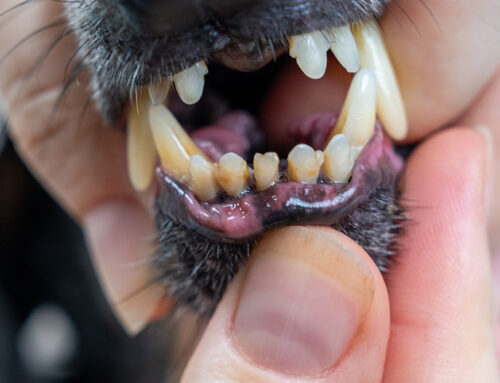If your pet is scheduled to have a procedure that requires anesthesia, you are likely anxious, especially if your beloved companion has complicating health issues. Anesthesia is necessary for dental procedures, and what we can achieve for your pet’s overall health and quality of life under anesthesia typically outweigh the risks. Our North Bay Veterinary Dentistry team can customize your pet’s anesthesia protocol to accommodate their needs if your furry pal has a complex health history, ensuring that the procedure they undergo is safe.
Understanding anesthesia’s role in veterinary dentistry
Anesthesia induces unconsciousness, eliminates pain sensations, and keeps pets still during procedures. Pets undergoing dental procedures often receive local (for example, numbing the mouth) and general anesthesia to provide adequate long-lasting pain control. We use a combination of techniques including injectable and safe gas anesthetics that allows us to make minute adjustments throughout surgery to keep your pet asleep at the lightest plane possible to avoid complications such as low blood pressure, abnormal heart rates or rhythms, and poor blood oxygenation.
Preanesthetic pet health evaluation
Although anesthesia results in serious complications in fewer than 2% of pets (being anesthetized for all sorts of procedures), risks are higher for pets with certain medical conditions. A comprehensive pre-anesthetic evaluation helps identify your furry pal’s potential risks, and we tailor the anesthesia plan to your pet’s needs. In most cases, a pet’s underlying medical conditions do not preclude safe anesthesia, and a dental procedure’s benefits outweigh the risks. There are cases where an increased anesthetic risk will result in us recommending further evaluation by a board-certified anesthesiologist or even their full time supervision for anesthesia. In the unlikely event that these risks outweigh a procedure’s benefits, our team will discuss alternatives to surgical treatment. Depending on your pet’s medical history, their pre-anesthetic evaluation may include the following:
- Medical history review — Understanding chronic conditions, current medications, and previous experiences with anesthesia and pain medications helps us establish your pet’s anesthesia protocol.
- Physical exam — A thorough physical exam helps us assess your pet’s overall health, including heart and lung function, so we can plan a dental procedure that is safe for your pet.
- Diagnostic testing — Blood tests and urinalysis reveal organ function, stress or infection presence, clotting ability, and ability to fight infection and heal normally, providing insight into expected drug metabolism and recovery speed. If your pet has a heart condition, we may order X-rays or an echocardiogram to fully understand their current heart function. Be sure that we will be thorough in our recommendations, review of their current health, and discuss what we find with you
Individualized pet anesthetic protocols
We customize each pet’s anesthesia plan based on the pre-anesthetic evaluation’s results. The custom plan includes selecting safe sedatives, anesthetics, and pain medications and choosing the correct dose range—which we will choose based on the most up-to-date research and knowledge taking into account age, breed, and their health. We may also add drugs to stabilize heart rhythms if we suspect an arrhythmia could occur while your pet is under anesthesia and determine emergency drug doses before going into surgery. We provide the following safety precautions for all pets:
- Intravenous (IV) catheter and fluids to maintain blood pressure and circulation.
- Endotracheal tube to protect the airway and administer oxygen and anesthetic gas.
- Supplemental heat to maintain body temperature.
- Continuous vital sign monitoring, including heart and respiratory rates, blood pressure, and oxygen level.
Advanced pet monitoring and support
Our clinic has advanced monitoring equipment and trained team members to track your pet’s vital signs, allowing us to immediately detect and respond to changes in your furry pal’s health status. In most cases, we can counteract changes by administering medications and specialized fluids, or by reducing the gas anesthesia. If your pet’s anesthesia complication risk is elevated, we discuss the possibility of a serious event or cardiopulmonary resuscitation (CPR) before we begin your furry pal’s dental procedure. Our monitoring capabilities include:
- Electrocardiogram (ECG) to monitor heart rate and rhythm.
- Pulse oximetry to measure blood oxygen saturation.
- Capnography to track carbon dioxide level and breathing rate.
- Doppler and oscillometric machines to monitor blood pressure.
- Temperature monitoring to prevent hypothermia or hyperthermia.
Postoperative pet care and anesthetic recovery
Your pet’s care after anesthesia is just as crucial as during the procedure because complications can occur during the postoperative period. Our team closely monitors and supports your pet throughout recovery by placing them in a quiet, comfortable area, continuing fluid support, checking vital signs, and assessing and managing their pain. We also provide you with details for home care, including medication instructions and how to prepare your furry pal’s food after an oral procedure.
Addressing your concerns about your pet’s anesthesia procedure

We encourage you to contact us immediately if you have concerns about your pet’s anesthesia, especially if their health history is complicated. Our team is committed to open communication and gladly addresses your questions or concerns about your pet’s safety and well-being.
Nearly all pets develop dental disease, and pets who require specialty care may suffer from other diseases that complicate anesthesia. Our North Bay Veterinary Dentistry team prioritizes your pet’s safety and comfort by performing comprehensive pre-anesthetic evaluations, creating individualized anesthetic protocols, leveraging state-of-the-art monitoring equipment, and providing attentive postanesthetic care. Schedule your pet’s dental consultation with us and learn how we can help them feel better, regardless of their medical history.






Leave A Comment